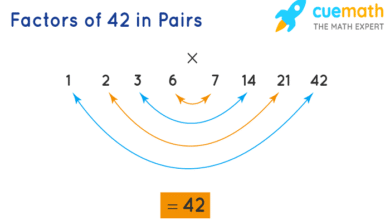
The derivative of e4xe^{4x}e4x is a fundamental concept in calculus that finds applications across various fields of science, engineering, and economics. Understanding how to differentiate exponential functions like e4xe^{4x}e4x is crucial for solving complex problems and analyzing dynamic systems. In this blog post, we will delve deep into the derivative of e4xe^{4x}e4x, exploring its calculation, significance, and practical uses.
Basics of Exponential Functions
Exponential functions are mathematical expressions where a constant base is raised to a variable exponent. The function e4xe^{4x}e4x is a specific type of exponential function where the base eee (approximately 2.71828) is raised to the power of 4x4x4x. This function grows rapidly and is essential in various natural and scientific phenomena.
Introduction to Derivatives
A derivative represents the rate at which a function changes concerning its variable. For e4xe^{4x}e4x, the derivative helps us understand how the function’s value changes as xxx varies. Differentiation is a core concept in calculus, providing insights into the behavior of functions.
Differentiation Rules
To find the derivative of e4xe^{4x}e4x, we use specific differentiation rules. The chain rule is particularly useful here, allowing us to differentiate composite functions. For e4xe^{4x}e4x, we recognize it as a composition of the exponential function and the linear function 4x4x4x.
Applying the Chain Rule
The chain rule states that the derivative of a composite function is the derivative of the outer function evaluated at the inner function times the derivative of the inner function. For e4xe^{4x}e4x, the outer function is eue^ueu (where u=4xu = 4xu=4x), and the inner function is 4x4x4x.
Step-by-Step Differentiation of e4xe^{4x}e4x
Let’s differentiate e4xe^{4x}e4x step-by-step:
- Identify the outer and inner functions: eue^ueu and 4x4x4x, respectively.
- Differentiate the outer function: The derivative of eue^ueu is eue^ueu.
- Differentiate the inner function: The derivative of 4x4x4x is 4.
- Apply the chain rule: Multiply the derivatives: e4x⋅4e^{4x} \cdot 4e4x⋅4.
- Simplify: The derivative of e4xe^{4x}e4x is 4e4x4e^{4x}4e4x.
Significance of the Derivative 4e4x4e^{4x}4e4x
The derivative 4e4x4e^{4x}4e4x indicates the rate of change of e4xe^{4x}e4x with respect to xxx. It shows how rapidly the function e4xe^{4x}e4x increases as xxx increases. This information is vital in understanding the growth patterns of exponential functions.
Graphical Representation
Graphing the function e4xe^{4x}e4x and its derivative 4e4x4e^{4x}4e4x provides a visual understanding of their relationship. The graph of e4xe^{4x}e4x is an exponential curve, and the graph of its derivative 4e4x4e^{4x}4e4x is a steeper exponential curve, reflecting the increased rate of change.
Real-Life Applications
The derivative of e4xe^{4x}e4x finds applications in various real-life scenarios. In finance, it helps in modeling compound interest. In biology, it describes population growth. In physics, it is used in decay processes and wave functions. Understanding 4e4x4e^{4x}4e4x aids in solving these practical problems.
Common Mistakes to Avoid
When differentiating e4xe^{4x}e4x, common mistakes include forgetting to apply the chain rule or incorrectly differentiating the inner function. Ensuring each step is followed accurately is crucial for obtaining the correct derivative 4e4x4e^{4x}4e4x.
Advanced Differentiation Techniques
Beyond the basic differentiation, advanced techniques can further simplify complex exponential functions. Techniques like logarithmic differentiation and implicit differentiation can be useful when dealing with more intricate functions involving e4xe^{4x}e4x.
Integration of e4xe^{4x}e4x
Integration is the inverse process of differentiation. Knowing the derivative 4e4x4e^{4x}4e4x, we can find the integral of e4xe^{4x}e4x. Integrating e4xe^{4x}e4x involves recognizing the antiderivative, which is 14e4x+C\frac{1}{4}e^{4x} + C41e4x+C.
Practice Problems
Practicing differentiation of e4xe^{4x}e4x reinforces understanding. Here are a few problems to try:
- Differentiate e4x+2e^{4x + 2}e4x+2.
- Find the second derivative of e4xe^{4x}e4x.
- Differentiate e4x2e^{4x^2}e4x2. These exercises help in mastering the differentiation of exponential functions.
Conclusion
The derivative of e4xe^{4x}e4x is 4e4x4e^{4x}4e4x, a crucial concept in calculus with wide-ranging applications. Understanding the process of differentiating exponential functions enables us to solve complex problems in various fields. By mastering the differentiation of e4xe^{4x}e4x, we gain deeper insights into the dynamic behavior of exponential growth and decay.
FAQs
1. What is the derivative of e4xe^{4x}e4x?
The derivative of e4xe^{4x}e4x is 4e4x4e^{4x}4e4x.
2. Why is the chain rule important for differentiating e4xe^{4x}e4x?
The chain rule is important because it allows us to differentiate composite functions, such as e4xe^{4x}e4x, by breaking them down into simpler parts.
3. Can the derivative of e4xe^{4x}e4x be used in real-life applications?
Yes, the derivative 4e4x4e^{4x}4e4x is used in various fields, including finance, biology, and physics, to model growth, decay, and other dynamic processes.
4. What is a common mistake when differentiating e4xe^{4x}e4x?
A common mistake is forgetting to apply the chain rule or incorrectly differentiating the inner function 4x4x4x.
5. How do you integrate e4xe^{4x}e4x?
To integrate e4xe^{4x}e4x, recognize the antiderivative: ∫e4x dx=14e4x+C\int e^{4x} \, dx = \frac{1}{4}e^{4x} + C∫e4xdx=41e4x+C.





